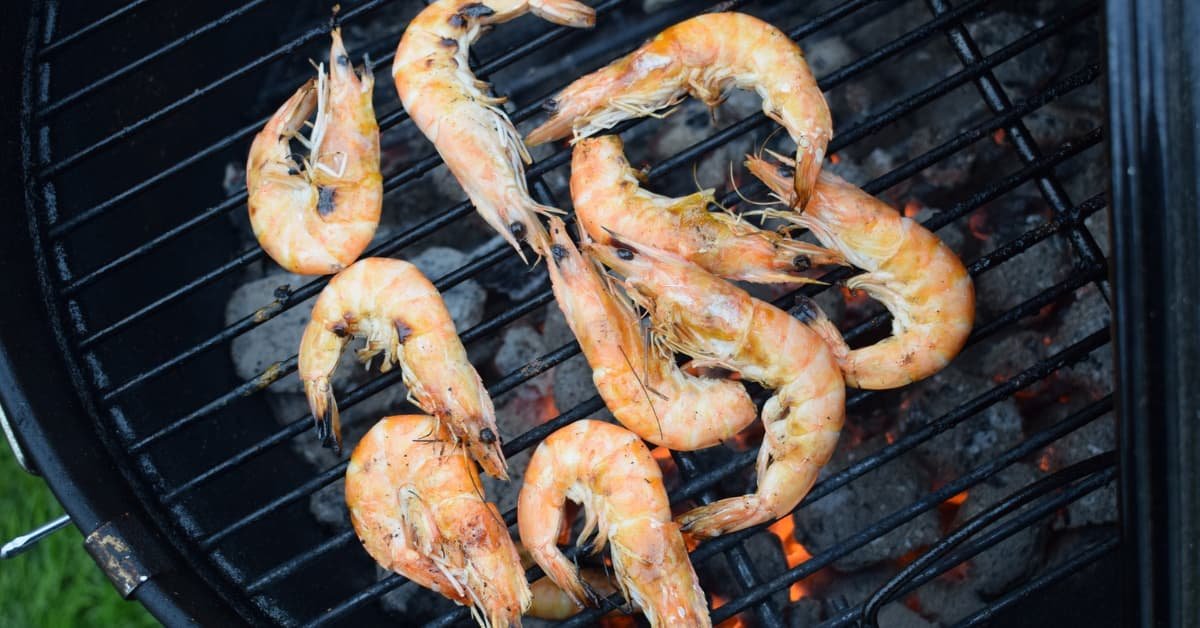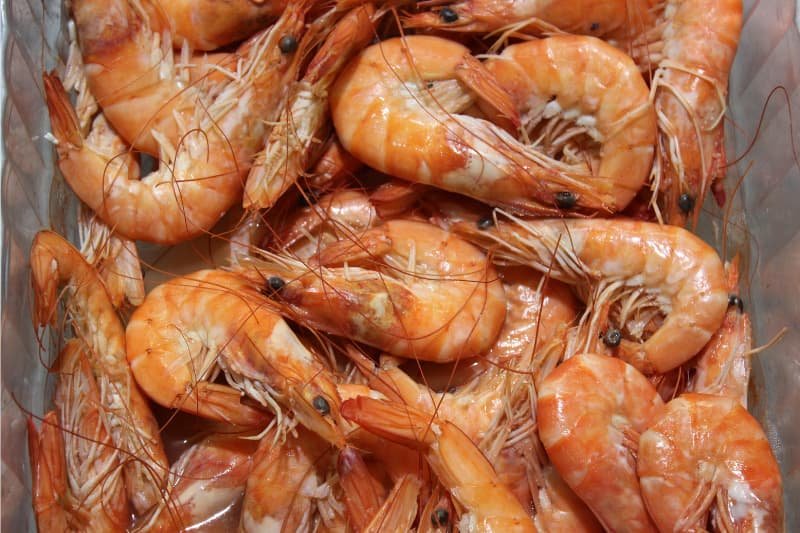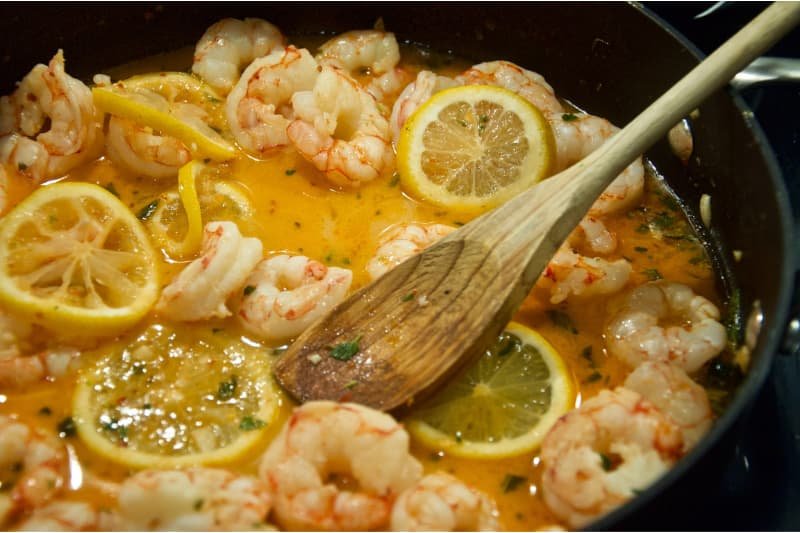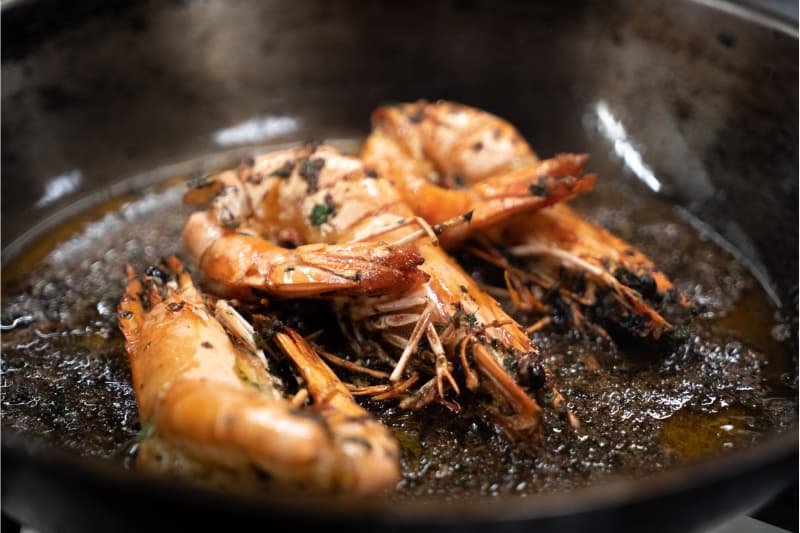
Grilling is a popular cooking method that adds a unique and delicious flavor to a range of foods, including seafood. Shrimp is a versatile and tasty ingredient that can be easily grilled without skewers. In this article, we will provide a comprehensive guide to buying, preparing, and grilling shrimp without skewers to achieve the perfect grilled shrimp every time.
To start, we will cover the basics of shrimp preparation, including buying and thawing. We will discuss the importance of selecting the right size and freshness of shrimp, as well as the various serving options available.
Next, we will delve into the topic of seasoning and flavoring, exploring the different options available to enhance the taste of grilled shrimp.
Finally, we will cover the various cooking methods that can be used to grill shrimp without skewers, including individual cooking, foil packet cooking, and skewer-free skewering.
By the end of this article, readers will have a comprehensive understanding of how to grill perfect shrimp without skewers and create a delicious and healthy meal that is perfect for any occasion.
Short Summary
- Proper shrimp preparation and marinating techniques are crucial for flavorful and tender grilled shrimp without skewers.
- Clean and well-oiled grilling equipment, such as a grill basket or perforated grill pan, can prevent sticking and ensure even cooking.
- Different sizes of shrimp have unique characteristics and are best suited for specific dishes or grilling methods.
- Shrimp can be seasoned with a variety of herbs and spices and cooked using different techniques, including direct and indirect heat, for added flavor.
Shrimp Preparation
The process of shrimp preparation is a crucial step in achieving perfectly cooked shrimp on the grill without skewers. Marinating techniques can be used to infuse the shrimp with flavor and to tenderize the meat. A marinade may consist of oil, acid, and seasonings.
Oil serves to prevent the shrimp from sticking to the grill and adds moisture to the meat. Acid, such as lemon juice or vinegar, acts as a tenderizer and adds brightness to the flavor. Seasonings, such as herbs and spices, add depth and complexity to the taste.
Grilling equipment is also a vital aspect of shrimp preparation. A clean and well-oiled grill grate will prevent the shrimp from sticking and tearing during cooking. It is important to heat the grill to the appropriate temperature before adding the shrimp.
A medium-high heat is ideal for grilling shrimp, as it allows for a crispy exterior while maintaining a juicy interior. A grill basket or perforated grill pan can also be used to prevent the shrimp from falling through the grates. Finally, it is crucial to monitor the cooking time carefully, as shrimp cook quickly and can easily become overcooked and rubbery.
Buying and Thawing

When purchasing and thawing shrimp for grilling, it is important to consider the freshness and size of the shrimp. Freshness is crucial for optimal flavor and texture, as shrimp that has been sitting in a display case for too long can develop an unpleasant fishy taste. It is recommended to purchase shrimp from a reputable seafood market or supplier and to ask when the shrimp was harvested.
Additionally, size can also affect the texture of the shrimp when grilled, with larger shrimp tending to be more tender and juicy.
When it comes to thawing shrimp, it is important to avoid using hot water or leaving the shrimp out at room temperature. These methods can result in bacterial growth and negatively impact the quality and safety of the shrimp. Instead, it is recommended to thaw shrimp in the refrigerator overnight or to use the defrost function on a microwave.
If using the microwave, be sure to follow the manufacturer’s instructions and to only thaw the shrimp, not cook it. Proper thawing techniques can help ensure that the shrimp is safe to eat and maintains its optimal texture and flavor when grilled.
Size and Serving Options
Considering the different sizes of shrimp available and the various serving options, it is important to understand how to best utilize these options for optimal flavor and presentation. Shrimp sizing can range from tiny cocktail shrimp to jumbo shrimp, and each size has its own unique characteristics. Smaller shrimp are best used in dishes such as salads, pasta, and stir-fries, while larger shrimp are perfect for grilling and skewering. It is important to note that larger shrimp may take longer to cook, so it is essential to monitor their cooking time to avoid overcooking.
Presentation styles for shrimp can vary greatly and can greatly enhance the flavor and visual appeal of the dish. Some popular serving options include shrimp cocktails, grilled shrimp skewers, and shrimp scampi. When serving shrimp cocktails, it is important to properly devein and clean the shrimp before cooking. Grilled shrimp skewers are a great option for outdoor barbecues and are best served with a variety of seasonings and dipping sauces. Shrimp scampi is a classic dish that is perfect for special occasions and can be served over pasta or with a side of crusty bread. By understanding the various shrimp sizing and presentation options, you can create delicious and visually appealing dishes that will impress your guests.
| Shrimp Size | Characteristics |
|---|---|
| Tiny cocktail shrimp | Perfect for salads and appetizers |
| Small shrimp | Ideal for pasta dishes and stir-fries |
| Medium shrimp | Versatile and can be used in a variety of dishes |
| Large shrimp | Perfect for grilling and skewering |
| Jumbo shrimp | Take longer to cook but are great for grilling and presentation |
Seasoning and Flavoring

To enhance the taste of shrimp, seasoning, and flavoring are important aspects to consider when grilling them. Shrimp can be seasoned with a variety of herbs and spices, which can add depth and complexity to their flavor profile.
Grilled shrimp marinades can be made with ingredients such as garlic, lemon, olive oil, and herbs like thyme, rosemary, and oregano. These marinades can be used to infuse the shrimp with flavor and help keep them juicy during the grilling process.
In addition to marinades, different cooking techniques can also be used to add flavor to shrimp. For example, shrimp can be grilled over open flames to give them a smoky flavor. They can also be cooked in foil packets with vegetables and other seasonings to create a one-pot meal with complex flavors.
When grilling shrimp, it is important to remember that they cook quickly and can become tough and rubbery if overcooked. By using the right combination of seasoning and cooking techniques, grilled shrimp can be a delicious and healthy addition to any meal.
Cooking Methods

One important aspect of cooking shrimp is selecting the appropriate cooking method. Different methods can produce different results in terms of texture and flavor.
Two common cooking methods for shrimp are direct heat and indirect heat. Direct heat involves placing the shrimp directly on the grill grates, while indirect heat involves cooking the shrimp on a cooler part of the grill or using a foil packet.
When using direct heat, it is important to keep a close eye on the shrimp to prevent overcooking. Shrimp cooks quickly and can become rubbery if left on the grill for too long.
Indirect heat allows for a slower, more even cooking process and can be a good option for larger shrimp.
Another consideration when cooking shrimp is whether to marinate it beforehand. Marinating can add flavor and help keep the shrimp moist, but it is important to not over-marinate as acidic ingredients can begin to break down the shrimp’s texture.
Overall, selecting the appropriate cooking method and considering marinating options can lead to perfectly grilled shrimp.
FAQs
Can you grill frozen shrimp without thawing them first?
Grilling frozen shrimp without thawing them first is not recommended due to the risk of uneven cooking and potential foodborne illness. Proper thawing techniques should be followed before grilling to ensure safe and delicious results. Various grilling techniques and recipe variations can be used to prepare flavorful shrimp.
How can you tell if shrimp is deveined?
The shrimp deveining process involves removing the digestive tract from the back of the shrimp. It is important to devein shrimp as the tract can contain sand or grit. Deveining can be done by hand or with a deveining tool.
What is the best way to store leftover grilled shrimp?
Leftover grilled shrimp should be stored in an airtight container in the refrigerator for up to three days. Proper storage and reheating techniques should be followed to avoid contamination and preserve flavor.
Can you use a gas grill to cook shrimp, or do you need a charcoal grill?
Both gas and charcoal grills can be used to cook shrimp, but there may be slight flavor differences. Thawing shrimp before cooking is recommended for better texture, but cooking frozen shrimp is also possible.
Are there any health concerns to consider when eating grilled shrimp?
While grilled shrimp is a delicious and nutritious option, there are some health concerns to consider. Grilled shrimp nutrition is high in protein and low in calories, but it can also contain high levels of mercury, which can be harmful in large amounts. It is important to consume grilled shrimp in moderation to avoid potential health risks.



